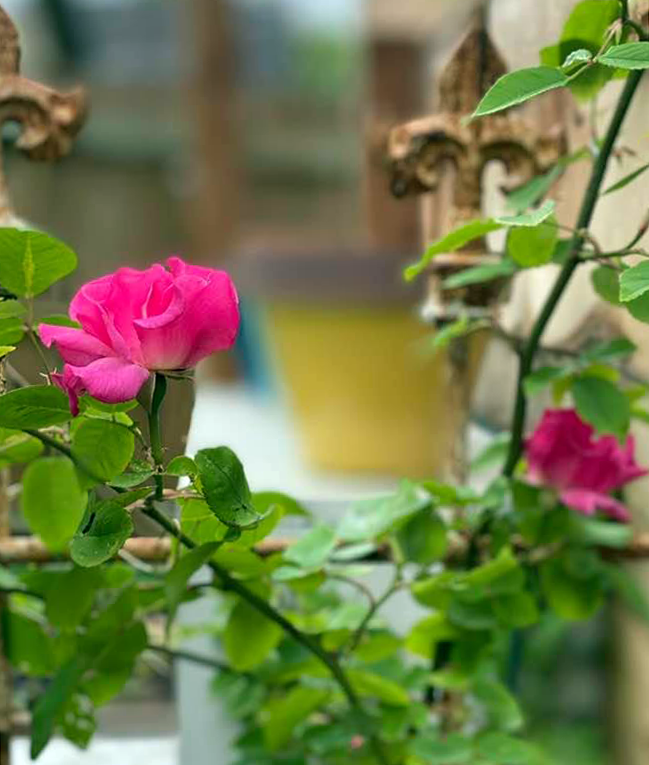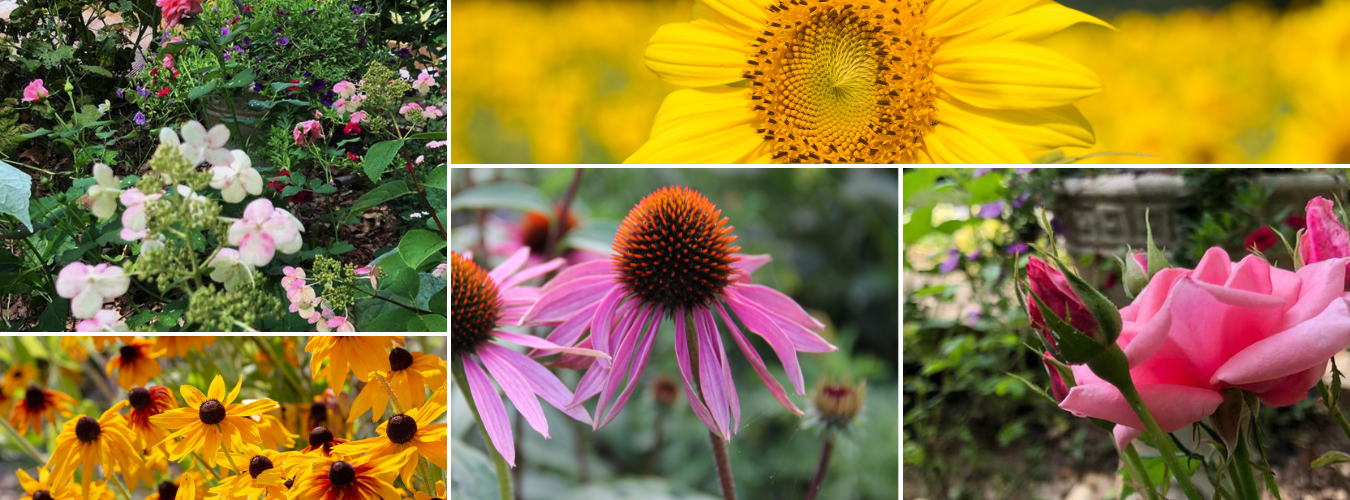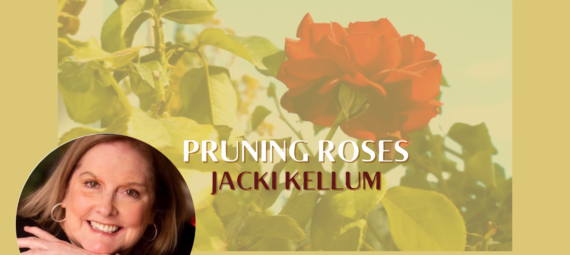

Pruning and deadheading roses is important for several roses.
- Remove Dead Canes – If you don’t remove dead canes, they will quickly deteriorate and will ultimately infect the entire plant.
- It is important to thin the canes in the thicket of a rose bush. This allows for better air circulation, which is important in disease control.
- Deadheading is important for aesthetic purposes. Spent, dried blossoms are not attractive in the garden.
- Deadheading is also important in terms of encouraging new growth and new blossoms.

A Cluster of Dried Blossoms on a Sunblush Rose in Jacki Kellum’s Garden

A Blooming Sunblush Rose in Jacki Kellum’s Garden
Sunblush Rose is a relatively new variety, but its disease resistance is similar to that of old garden roses.
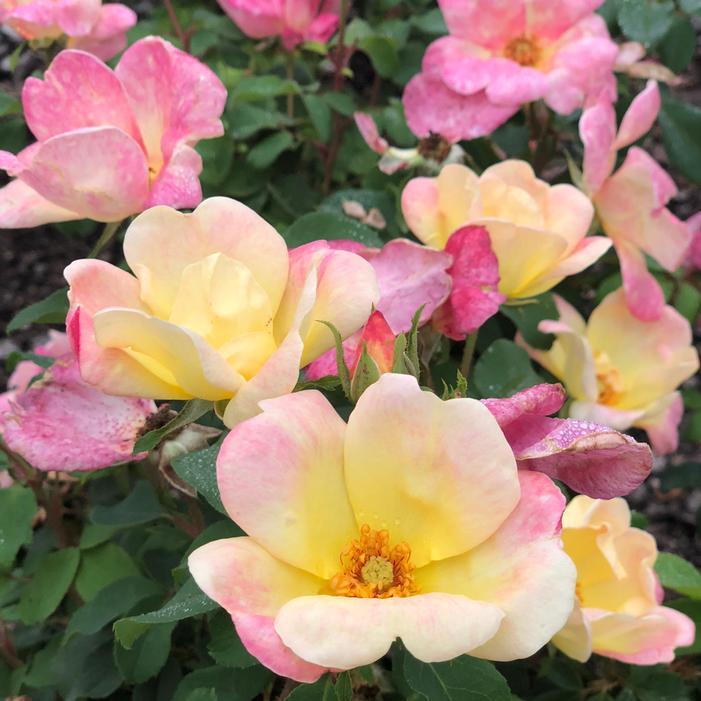
Sunblush Roses will simultaneously display blossoms in a variety of pastel colors. It reminds me of one of my old garden favorite roses Mutablis, which dates back to the 1800s. Sunblush rose does not climb, and it bears its blooms in clusters.

My main bit of advice on pruning is that roses should be pruned as close to a joint as possible. Otherwise, the cane above the joint will begin to die [as shown in the above photo], and any amount of dying rose canes can infect the entire bush. It is also important to remember that the cut should be made in a joint where a 5-leafed stem is growing. 3-leafed stems are not strong enough to withstand the stress of pruning.
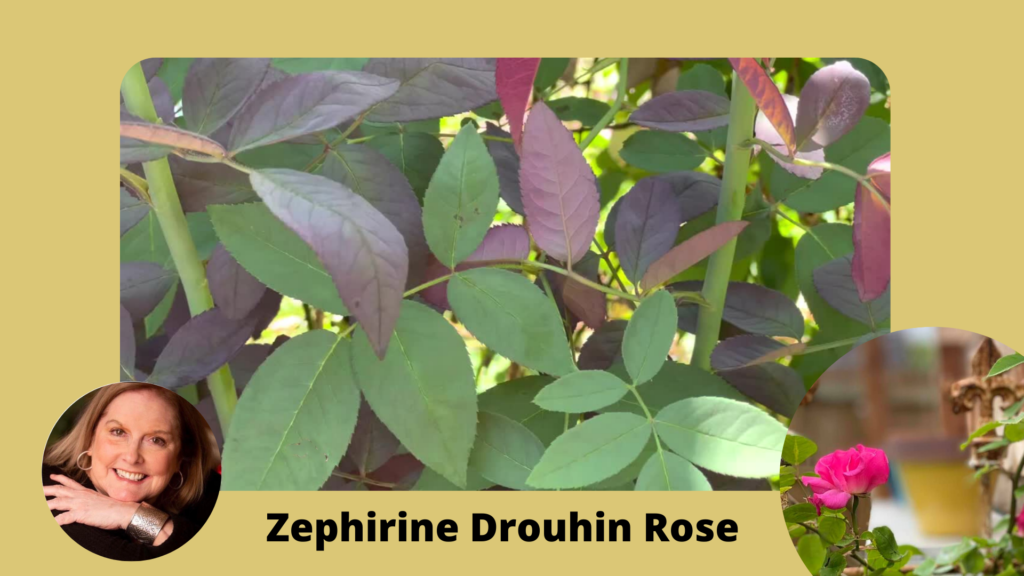
Zephirine Drouhin Rose is a disease-resistant climbing rose. The new growth on Zephirine Drouhin Rose is burgundy.
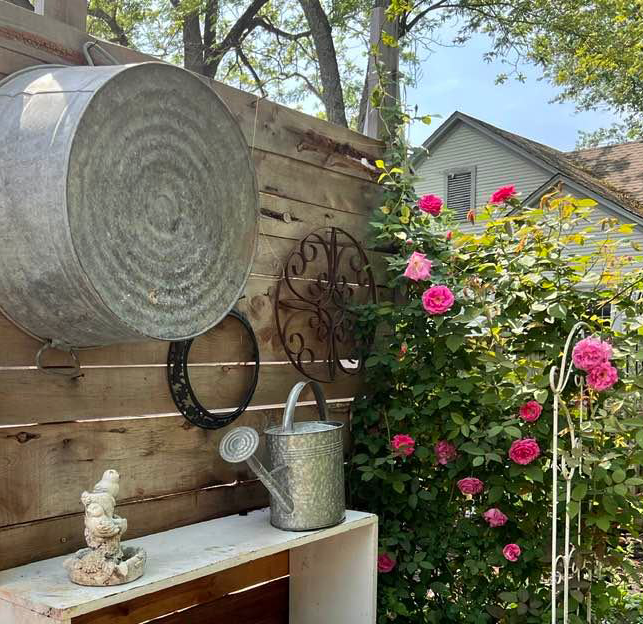
Zephirine Drouhin Rose in Jacki Kellum’s Garden – Growing along a garden wall. May 2022
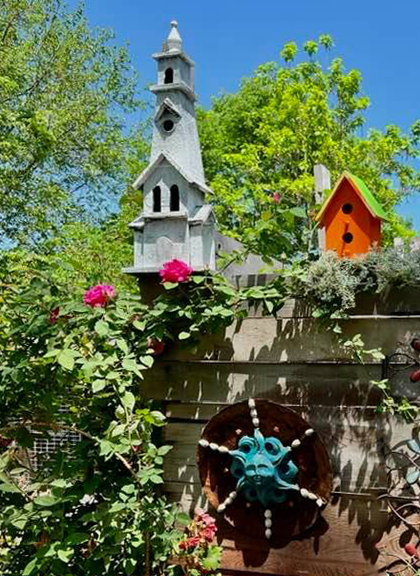
The Zephirine Drouhin Rose does a bit of repeat blooming, but it reaches its peak blooming time in May.

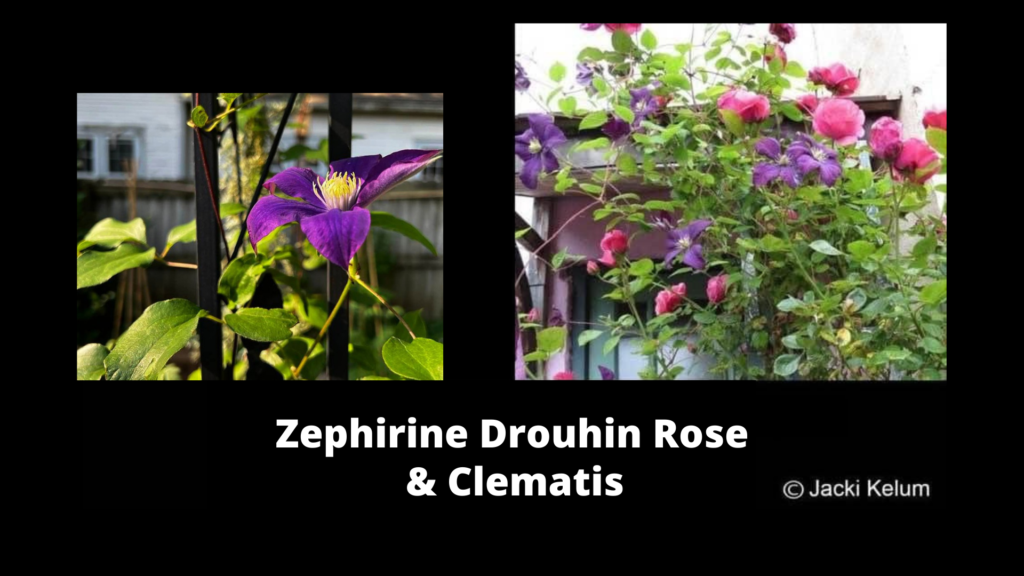
I always grow at least one Jackmanii Clematis with a Zephirine Drouhin Rose. I like the way that the pinks and purples play on each other.

Jackmanii Clematis growing in Jacki Kellum Garden
